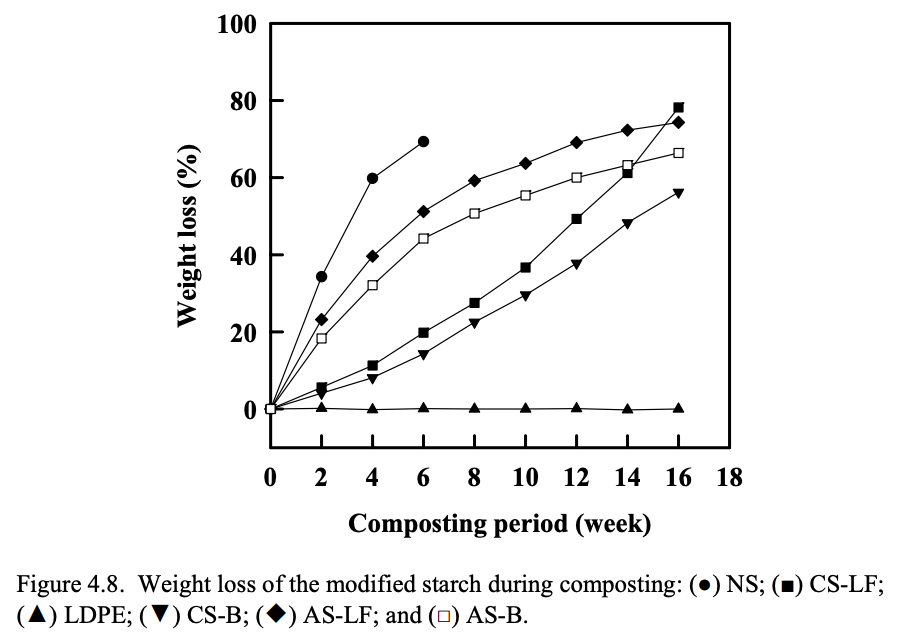Biodegradable material can be defined as a material that has a proven capability to decompose in a specific environment within a period through natural biological processes into non-toxic carbonaceous soil, water, carbon dioxide, or methane. Apparently, natural starch is a biodegradable material. In this dissertation, natural starch has been chemically modified by various functional groups, including ionic groups, hexanoyl groups, and benzoyl groups. Whether or not these chemically modified starches are still biodegradable crucially dictates their potential applications. Biodegradation represents a complex phenomenon brought about by the actions of naturally occurring microorganisms, such as bacteria, fungi, and algae. As biodegradation proceeds, it produces carbon dioxide, water, and/or methane. Biodegradability can be characterized by monitoring the change of such properties as thickness, transparency, weight, tensile strength, and molecular weight/distribution of molecular weight of a material or the production of by-products (e.g., carbon dioxide and methane) during the biodegradation. It must be noted that a specific time frame should be added to any characterization of biodegradability.

In this dissertation, composting environment was built for the characterization of biodegradability of the modified starches. Composting is one of the most important waste management strategies, and natural starch is readily biodegradable in a composting environment. The weight loss of samples during composting will indicate biodegradation. Thus, the biodegradability of natural starch and the modified starches can be quantitatively evaluated by measuring the weight loss of samples against time. Figure 4.8 shows the weight loss of the modified starches during composting against time. For natural starch (the positive control in our research), we can see from Figure 4.8 that it degraded very fast in composting. After 6 weeks, natural starch completely degraded. For LDPE (the negative control in our research), we cannot find any weight loss during the whole testing period, suggesting no degradation during composting.
For the modified starches synthesized in the present study, we can clearly find weight loss during composting, suggesting biodegradability of a modified starch. In Figure 4.8, we can observe that the degradation of natural starch is faster than the modified starches, suggesting that the biodegradability of natural starch is higher than modified starches. It is interesting to observe that the modified starches having cationic functional groups (CS-LF and CS-B) have different degradation patterns from the modified starches having anionic functional groups (AS-LF and AS-B).
